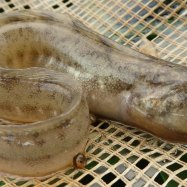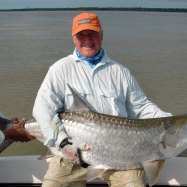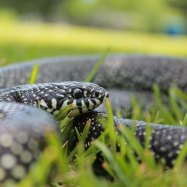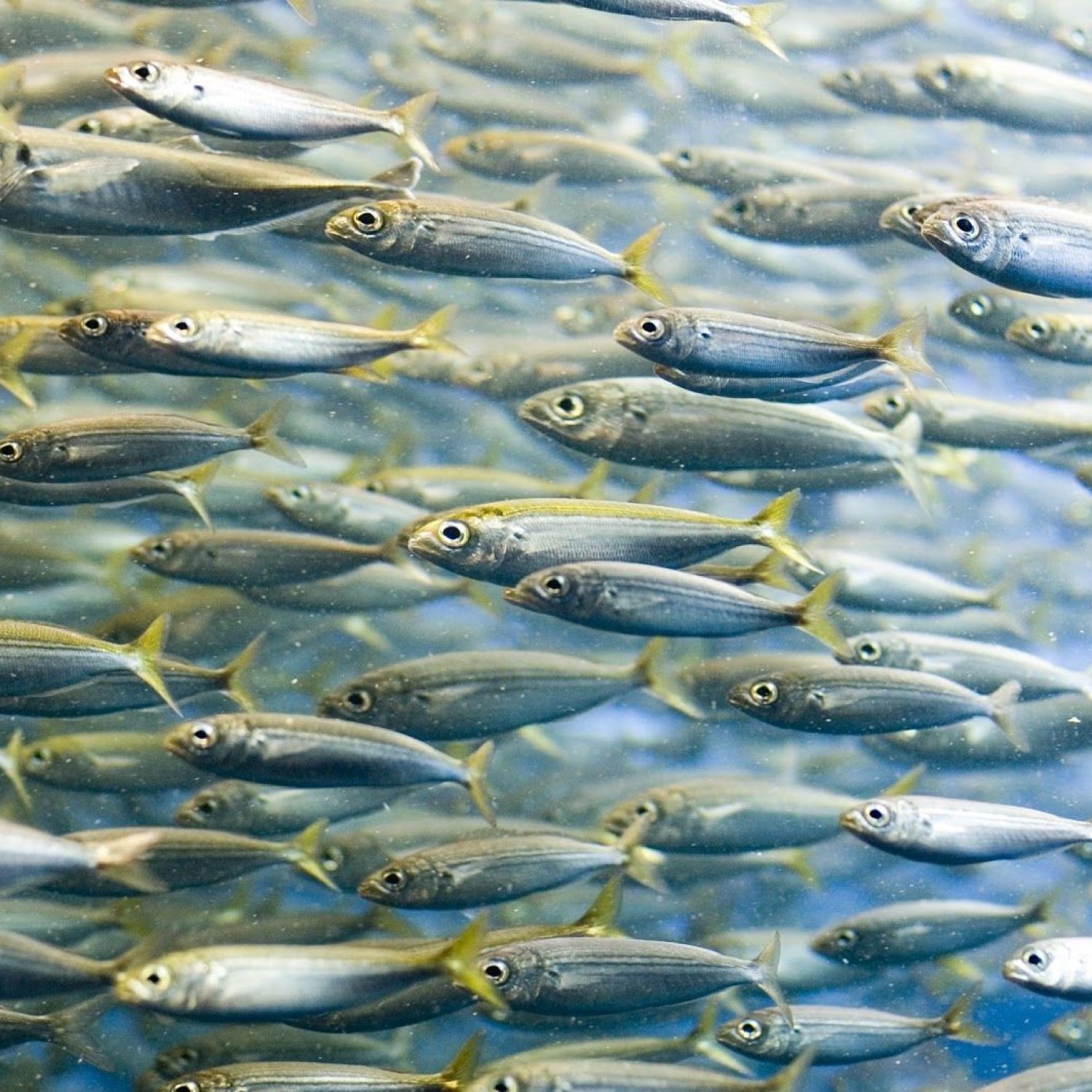
Sardines
Around 15 to 20 centimeters
Sardines, also known as pilchards, are small, oily fish that thrive in coastal areas. With a distinct elongated and cylindrical body shape, they typically measure around 15 to 20 centimeters long. Belonging to the family Clupeidae, sardines are an important food source and play a vital role in the marine ecosystem. #Sardines #Pilchards #CoastalFish #MarineLife #Clupeidae
Animal Details Summary:
Common Name: Sardines
Kingdom: Animalia
Habitat: Marine
The Unsung Heroes of the Sea: Sardines
When we think of marine animals, the first image that may come to our minds is a majestic dolphin jumping out of the water or a fearsome shark swimming in the depths. But there is one small and unassuming fish that plays a crucial role in the health of our oceans – the sardine.Sardines, scientifically known as Sardinops sagax, are commonly found in the Pacific Ocean, the Atlantic Ocean, and the Mediterranean Sea. They belong to the Animalia kingdom and the phylum Chordata, making them part of the vast and diverse family of vertebrates Sardines. Sardines are classified as Actinopterygii, which refers to the ray-finned fishes, and they belong to the order Clupeiformes and the family Clupeidae.
These small fish inhabit coastal areas, making them easily accessible to humans. They have been an essential part of coastal communities for centuries, both as a food source and as a vital part of the ecosystem. With their silver coloration, elongated and cylindrical body shape, and a length of around 15 to 20 centimeters, sardines may seem unremarkable at first glance. But beneath their unassuming appearance lies a creature with incredible adaptability and importance.
Habitat and Distribution
One of the most remarkable facts about sardines is their incredible ability to adapt to various habitats and their extensive geographical distribution. They can be found in both cold and warm waters, making them a globally distributed species. Sardines can be found in the Pacific and Atlantic Oceans, as well as the Mediterranean Sea and the Black Sea.These fish prefer living in coastal areas near the shore, where waters are rich in nutrients and plankton – their primary food source Sand Cat. They are known to form large schools near the water's surface, making them easily visible to predators and fishermen. Sardines are also very social creatures, and they often swim in synchronized patterns, making for a breathtaking sight for any onlookers.
Feeding Habits
As filter feeders, sardines play a vital role in maintaining the balance of ocean ecosystems. They feed on plankton and other small organisms present on the water's surface, filtering them through their gills. This feeding method allows them to consume vast amounts of food, making them an essential part of the ocean's food web.Moreover, sardines' diet primarily consists of phytoplankton, which is responsible for producing around 50% of the earth's oxygen. Thus, these small fish play a significant role in regulating the planet's oxygen levels, making them crucial not just for the sea but also for the overall health of our planet.
Country of Origin
Sardines are found in abundance in various countries, making it challenging to pinpoint their exact country of origin. Some of the leading producers of sardines include China, India, Morocco, the United States, and Peru. However, due to their adaptable nature, sardines may be found in almost any coastal region worldwide, making them a truly global species.The Role of Sardines in the Ecosystem
Sardines play a significant role in the ocean's delicate ecosystem, serving as prey for many marine animals, such as dolphins, seals, and larger fish. They are also preyed upon by seabirds, sharks, and even humans. As filter feeders, sardines help to maintain healthy plankton populations, which are necessary for ocean life to thrive.Furthermore, sardines are considered a vital indicator species, meaning their abundance or decline can give an insight into the overall health of the ocean. Various factors, such as changes in water temperature and overfishing, can affect sardine populations, making their presence or absence a crucial indicator of the ocean's health.
Sardines and Humans
Sardines have been a vital source of food for humans for centuries. In many countries, they are a staple food, providing a significant source of protein and essential nutrients. Houses near the coast often have a distinct smell – a result of drying sardines, which is a common method of preserving the fish.Sardines are also a vital part of the fishing industry, providing a source of income for many coastal communities worldwide. However, over the years, sardine populations have faced significant declines due to overfishing and changes in ocean temperatures. To ensure the sustainability of sardines as a vital food source, conservation efforts and sustainable fishing practices are essential.
The Threats to Sardine Populations
Despite their adaptability and essential role in the ocean's ecosystem, sardines face several threats that have significantly impacted their populations worldwide. Overfishing is the most significant threat, as sardines are caught in large numbers for human consumption, animal feed, and bait. The high demand for sardines has led to unsustainable fishing practices, causing a significant decline in their populations.Climate change also poses a severe threat to sardines. As waters get warmer, the plankton that sardines feed on may be affected, leading to a decline in their food source. Moreover, warmer waters can also affect the reproduction and migration patterns of sardines, further impacting their populations.
Conservation Efforts for Sardines
To ensure the sustainability of sardines as an essential part of the ocean's ecosystem, conservation efforts are necessary. Various organizations and governments around the world have implemented measures to protect and manage sardine populations. These include implementing catch quotas, promoting sustainable fishing practices, and monitoring the impact of climate change on sardines.Additionally, many initiatives aim to raise awareness about the importance of sardines and the need to protect them. By educating the public about the role of sardines in the ocean and promoting sustainable fishing practices, these efforts aim to secure a healthy future for sardines and the entire marine ecosystem.
The Future of Sardines
Sardines may not be as charismatic as dolphins or sharks, but their importance to the ocean and the planet cannot be overstated. With their adaptability and crucial role in the food chain and oxygen production, sardines are true unsung heroes of the sea.To ensure a sustainable future for sardines, it is essential to continue implementing conservation efforts and promoting sustainable fishing practices. We must also take actions to mitigate the effects of climate change to ensure the continued survival of these vital creatures.
In conclusion, sardines may be small in size, but their impact on the ocean and the planet is significant. By understanding their importance and taking steps to protect them, we can ensure a healthy future for sardines and all the marine life that depends on them. So the next time you see a school of shimmering silver fish in the ocean, remember the unsung heroes of the sea – the sardines.

Sardines
Animal Details Sardines - Scientific Name: Sardinops sagax
- Category: Animals S
- Scientific Name: Sardinops sagax
- Common Name: Sardines
- Kingdom: Animalia
- Phylum: Chordata
- Class: Actinopterygii
- Order: Clupeiformes
- Family: Clupeidae
- Habitat: Marine
- Feeding Method: Filter Feeder
- Geographical Distribution: Pacific Ocean, Atlantic Ocean, and Mediterranean Sea
- Country of Origin: Various countries
- Location: Coastal areas
- Animal Coloration: Silver
- Body Shape: Elongated and cylindrical
- Length: Around 15 to 20 centimeters
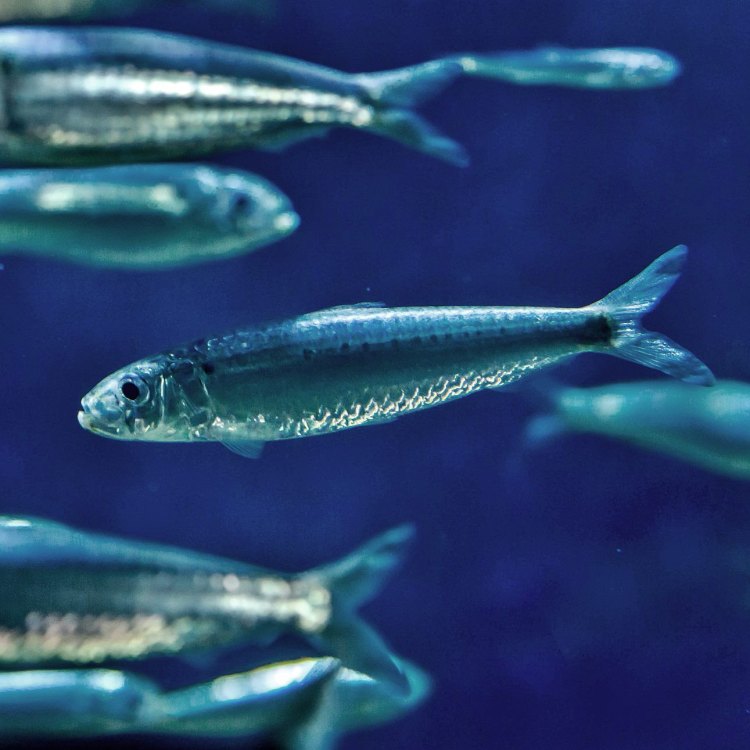
Sardines
- Adult Size: Around 15 to 20 centimeters
- Average Lifespan: Around 3 to 4 years
- Reproduction: Spawning
- Reproductive Behavior: Form large schools for spawning
- Sound or Call: No specific sound or call
- Migration Pattern: Seasonal migrations
- Social Groups: Form large schools
- Behavior: Highly migratory
- Threats: Overfishing, habitat destruction, pollution
- Conservation Status: Not evaluated
- Impact on Ecosystem: Important prey species
- Human Use: Commercial fishing, culinary
- Distinctive Features: Large schools, silver coloration
- Interesting Facts: Sardine fisheries are economically important in many countries.
- Predator: Various marine predators
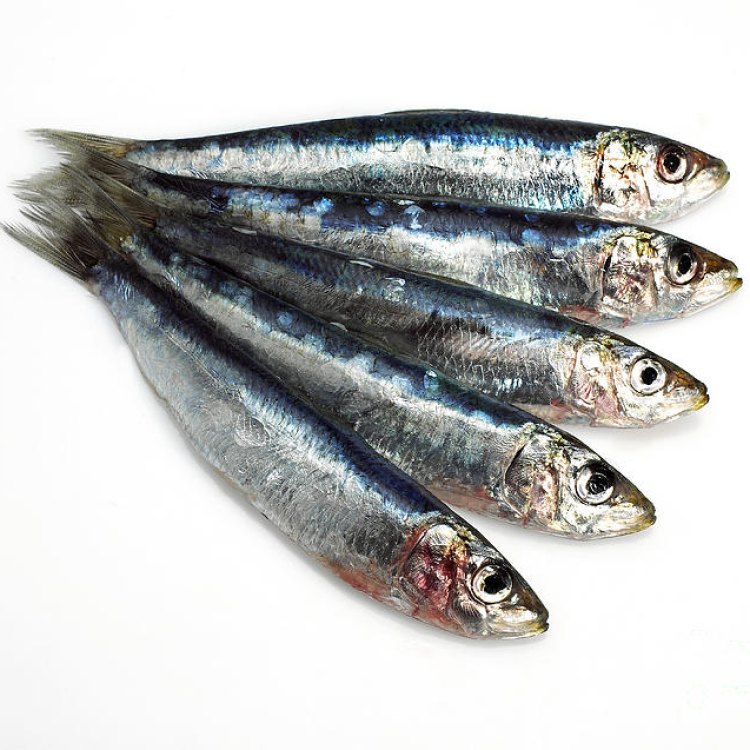
Sardinops sagax
Sardines: The Small Fish with a Big Impact
When you think of sardines, you may picture those tiny fish packed into a can and served as a staple snack. But did you know that sardines are much more than just a popular food item? These small, silver-colored fish play a significant role in the ecosystem and have a fascinating reproductive behavior that often goes unnoticed.Sardines, scientifically known as Sardinops sagax, are a type of small, oily fish found in various parts of the world, including the Mediterranean Sea, Pacific Ocean, and the Atlantic Ocean. They belong to the Clupeidae family, which includes other small fish such as herring and anchovies PeaceOfAnimals.Com.
In this article, we'll delve into the unique features and behaviors of sardines, their impact on the ecosystem, and their importance to humans.
## Size and Lifespan
Sardines are relatively small fish, reaching an adult size of around 15 to 20 centimeters. They have a sleek, slender body with a silvery-blue coloration that helps them blend in with their surroundings. These fish can live up to three to four years on average.
## Reproduction and Spawning
One of the most interesting aspects of sardines is their spawning behavior. Sardines reproduce through spawning, where females release their eggs into the water, and males simultaneously fertilize them. This process usually takes place in large schools of hundreds to thousands of individuals.
Unlike some fish species, sardines do not have a specific breeding season. They can spawn multiple times throughout the year, depending on the water temperature and availability of food Satanic Leaf Tailed Gecko.
## Social Behavior
Sardines are highly social animals and often form large schools for spawning and protection. These schools can consist of millions of individuals, making them one of the largest marine gatherings on the planet.
The formation of these schools not only protects the fish from predators but also allows them to communicate more efficiently and coordinate their movements, making them less vulnerable to attacks.
## Migration Patterns
Sardines are highly migratory fish and undergo seasonal migrations in search of food and suitable breeding grounds. In some cases, these migrations can cover hundreds of kilometers, making them an essential part of the marine ecosystem wherever they go.
## Threats to Survival
Despite their remarkable resilience and high reproductive rate, sardines face many threats that can endanger their survival.
One of the most significant threats is overfishing. These fish are in high demand for their commercial value, making them a target for large-scale fishing operations. Fishing pressure has significantly reduced sardine populations in some parts of the world, leading to concerns about their sustainability.
Habitat destruction and pollution are also major concerns for sardine populations. As with many other marine species, their habitats are being destroyed by human activities such as coastal development and pollution from industries and plastic debris.
## Conservation Status
Currently, sardines have not been evaluated for their conservation status by the IUCN (International Union for Conservation of Nature). Still, their rapidly declining populations have raised concerns among researchers and conservationists.
Efforts are being made to monitor and regulate fishing practices, as well as implement stricter measures to reduce pollution and protect sardine habitats.
## Impact on the Ecosystem
Despite their small size, sardines play a vital role in the marine ecosystem. As planktivorous fish, they feed on plankton and small fish, and they, in turn, become prey for various marine predators such as sharks, dolphins, and larger fish.
Their abundance also makes them an important food source for humans, especially in developing countries where sardine fisheries are economically significant.
## Human Use and Consumption
Sardines are an excellent source of protein, omega-3 fatty acids, and essential minerals such as calcium and vitamin D. The high demand for these nutritional benefits has made sardines a favorite food for many cultures worldwide.
In addition to their consumption as a food item, sardines are also used for commercial fishing, where they are caught and canned for export or sold fresh in local markets.
## Distinctive Features
One of the most distinctive features of sardines is their tendency to form large schools, making them an easily recognizable sight in the ocean. They also have a silvery coloration that helps them blend in with the water and reflect light, making them almost invisible to predators.
## Interesting Facts
Sardines have many interesting facts that make them stand out among other fish species.
For instance, sardine fisheries are an essential source of income for many coastal communities worldwide, providing employment for thousands of people. In some countries, sardines are considered a delicacy and often feature in traditional dishes.
Sardines also have a sensitive lateral line system, which allows them to detect vibrations and changes in pressure. This sensory organ helps them navigate and communicate with other sardines in their schools.
## Predator and Prey Relationships
As with any other species, sardines have various predators and prey relationships that are vital for maintaining balance in the marine ecosystem. These small fish are preyed upon by larger fish, birds, and marine mammals, while they, in turn, feed on plankton and other small fish.
The presence of sardines in the ocean also has a positive impact on the diversity and abundance of other marine life, making them an important species for the overall health of the ecosystem.
## In Conclusion
Sardines may be small, but they play a significant role in the marine environment and have a fascinating reproductive behavior that showcases their highly social and intelligent nature. However, their populations are under threat from overfishing and habitat destruction, making it essential for us to take action to protect them.
Recognizing the importance of sardines and implementing sustainable practices will not only ensure their survival but also help maintain the balance of the marine ecosystem. So next time you see a school of sardines swimming by, remember their crucial role in our oceans and how we can all contribute to their conservation.
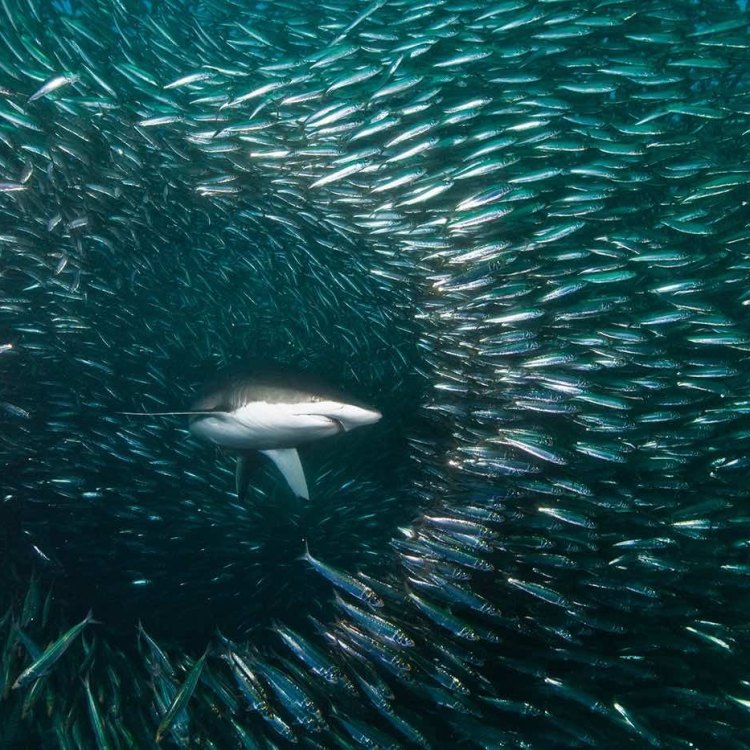
The Unsung Heroes of the Sea: Sardines
Disclaimer: The content provided is for informational purposes only. We cannot guarantee the accuracy of the information on this page 100%. All information provided here may change without prior notice.






